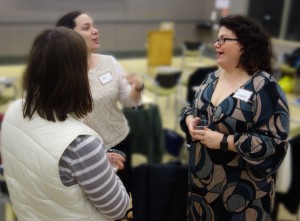Preventive Conservation
June 18 – July 1, 2016
Staatsburgh State Historic Site, Staatsburgh, NY
Instructors: Genevieve Bieniosek, John Childs, Catherine Coueignoux, Cathy Mackenzie, Kirsten Schoonmaker
Description: The 2016 Preventive Conservation Workshop is a 14 day course for pre-program conservation students, focusing on historic housekeeping. The workshop will take place at Staatsburgh State Historic Site, overlooking the Hudson River in New York State. Eight participants will be selected for the program, which will take place June 18 – July 1, 2016. The program is presented by the Foundation for the American Institute for Conservation of Historic and Artistic Works.
Registration: There is no registration fee and the participants will receive a travel stipend. Housing and meals are provided to successful applicants. Please submit a detailed letter of interest and a resume to courses@conservation-us.org. Application materials must be received by April 8, 2016.
About the Workshop: The workshop will use the perspective of a housekeeper working in a historic house to introduce preventative conservation principles. The housekeeper is the primary person interacting with the entire collection on a daily basis, and so he/she will have to assess the environment and recognize the effects on the historic artifacts. The participants will learn in-depth methods of caring for all collections in a historic house, and also gain insight into artifact conservation and the conditions that cause deterioration.
There will be five instructors representing collection specialties. The group will tackle the “deep” cleaning of a room in the historic interior, including moving furniture, rolling and vacuuming a carpet and cleaning the decorative arts objects. Hands-on activities will be complimented by lectures and site visits to other historic properties. Students will be expected to contribute to a blog post and document the tasks performed.
About the Site: Staatsburgh State Historic Site, located about half-way between New York City and Albany, is the elegant country home of Ogden Mills and his wife Ruth Livingston Mills. Sitting atop a grassy hill overlooking the Hudson River and the Catskill Mountains, their house is a fine example of a great estate built by America’s financial and industrial leaders during the Gilded Age (1876 – 1917). Major remodeling in 1895-96 transformed the house from a 25-room Greek Revival style home into a Beaux-Arts mansion of 65 rooms and 14 bathrooms. More information about the site can be found at http://parks.ny.gov/historic-sites/25/details.aspx.
Questions?
Contact: Sarah Saetren
FAIC Education Assistant
202-661-8071
courses@conservation-us.org

